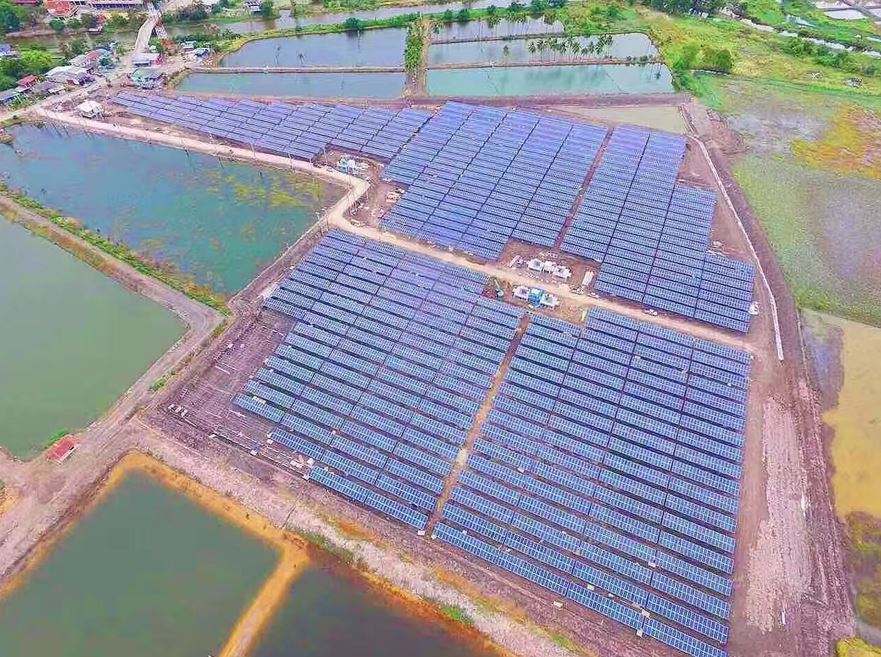Policies now in place throughout the region suggest that the share of renewables in regional TPES will likely jump to just below 17% by 2025, from under 10% in 2014, IRENA says in a new report.
“To reach the aspirational target of 23% renewables in the region’s primary energy mix by 2025, Southeast Asian countries will have to substantially scale up their deployment of renewables in the power sector, as well as in heating, cooling and transport,” says Adnan Z. Amin, director general of IRENA.
In the years to come, the rising deployment of solar and other renewable energy technologies will continue to drive economic growth and improve electricity access in Southeast Asia.
Annual economic growth in the region is now above 4%, and this will drive up energy demand in the years to come, with renewables poised to fill the gap, IRENA says in Renewable Energy Market Analysis: Southeast Asia. The report — released at the recent United Nations Global SDG7 Conference in Bangkok — looks at utility-scale, rooftop and off-grid applications.
Energy consumption throughout the region almost doubled in the 10 years to 2015, rising at an annual rate of 3.4%. Demand is rising at the fastest clip in Brunei Darussalam, Cambodia and Vietnam. However, Indonesia, Malaysia, Thailand and Vietnam accounted for the lion’s share of Southeast Asia’s total final energy consumption in 2015, IRENA says.
Regional energy consumption is expected to more than double by 2040, the intergovernmental organization says. As a result, Southeast Asia faces “staggering energy challenges” in the years ahead. But solar is ideally positioned to help address rising energy demand, it says, noting that installed costs for PV fell 45% from 2012 to 2016.
Economically, IRENA acknowledges that more expansive renewables development will only drive up regional gross domestic product slightly. From 2006 to 2016, $27 billion was cumulatively invested in renewable energy throughout the ASEAN economies. But greater deployment will have other economic impacts beyond simply boosting annual GDP.
“The accelerated adoption of renewable energy offers broad environmental, economic and social benefits, including creating jobs, reducing air pollution and tackling climate change,” says Amin. “Policymakers and other development actors should prioritize investment in clean, reliable and affordable energy as a pillar of development across the region.”
IRENA expects Southeast Asia’s renewable energy industries to employ roughly 1.7 million people by 2030, based on policies that are now in place. However, the number of jobs could jump to 2.2 million if ASEAN countries start to aggressively ramp up deployment. Renewables created about 611,000 new jobs in 2016, IRENA says. Liquid biofuels was the largest source of employment, followed by solar and large hydropower.
Large hydropower now accounts for more than 75% of the regional renewable energy mix, but it fell as a share of total regional installed capacity to 75% in 2016, from 80% in 2000 at the turn of the century. Solar still accounts for a small portion of the regional generation mix, despite a jump in deployment over the past few years.
Southeast Asia is still very dependent on fossil fuels for power generation and transport. Yet about 65 million people throughout the region still lack sufficient access to reliable sources of electricity, IRENA says. Renewables such as solar can and should play a vital role in improving energy access in Southeast Asia, IRENA argues. But the region has yet to truly exploit its vast renewable energy potential, even though all of the ASEAN countries have now established renewable energy targets.
Fortunately, investment in renewables jumped to $27 billion between 2006 and 2016, mainly in Indonesia, Malaysia, the Philippines, Singapore, Thailand and Vietnam. Thailand was the regional leader, drawing more than $10 billion in investment over that time period, followed by Indonesia and the Philippines. Bioenergy was the biggest investment target, followed by solar and geothermal.
“Affordable, secure and environmentally sustainable energy will be crucial to underpin Southeast Asia’s development over the coming decades,” says Amin. “The diversification of Southeast Asia’s energy supply through investments in renewables offers a viable option to support expansion and also achieve wider socio-economic and environmental benefits.”
This content is protected by copyright and may not be reused. If you want to cooperate with us and would like to reuse some of our content, please contact: editors@pv-magazine.com.



By submitting this form you agree to pv magazine using your data for the purposes of publishing your comment.
Your personal data will only be disclosed or otherwise transmitted to third parties for the purposes of spam filtering or if this is necessary for technical maintenance of the website. Any other transfer to third parties will not take place unless this is justified on the basis of applicable data protection regulations or if pv magazine is legally obliged to do so.
You may revoke this consent at any time with effect for the future, in which case your personal data will be deleted immediately. Otherwise, your data will be deleted if pv magazine has processed your request or the purpose of data storage is fulfilled.
Further information on data privacy can be found in our Data Protection Policy.